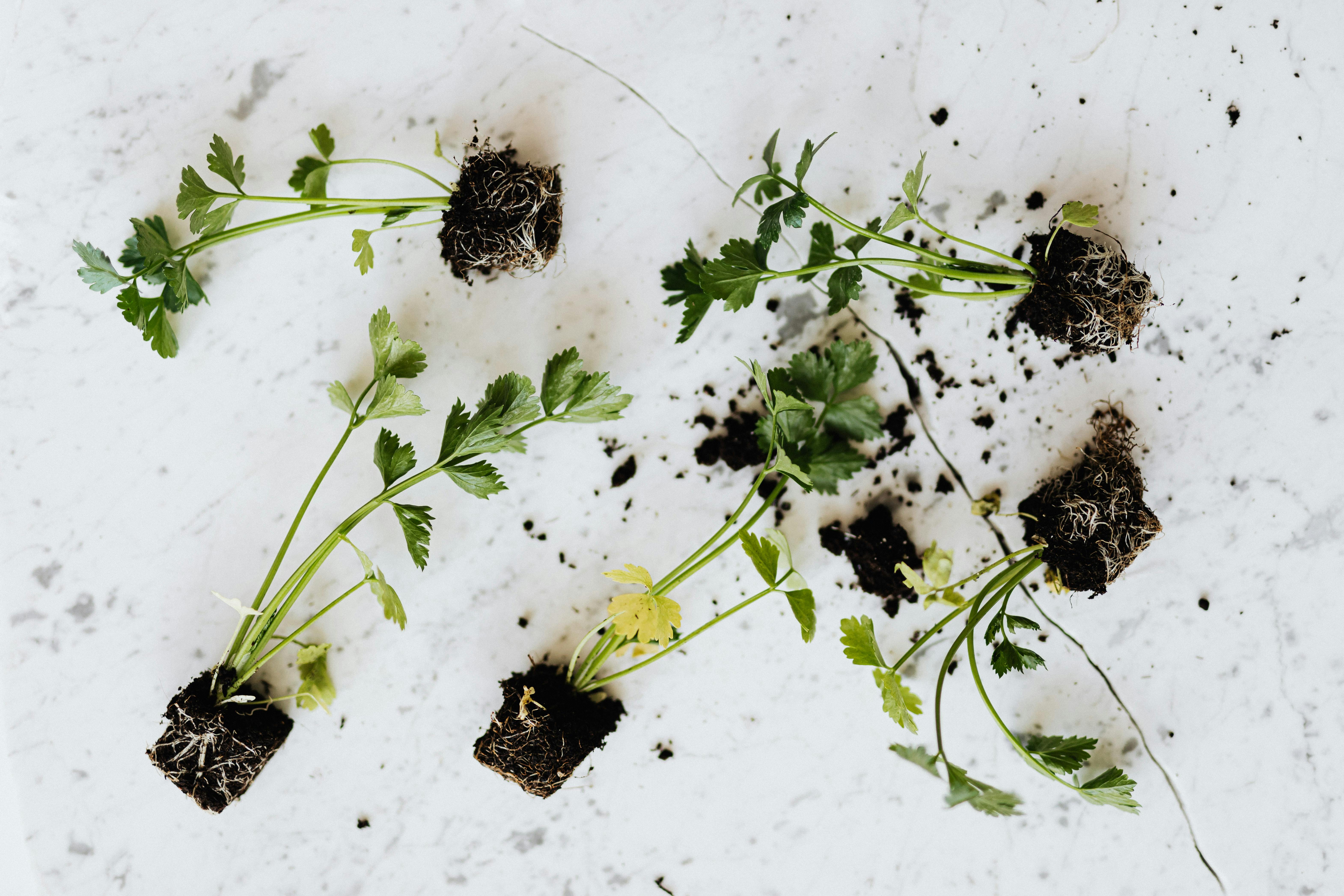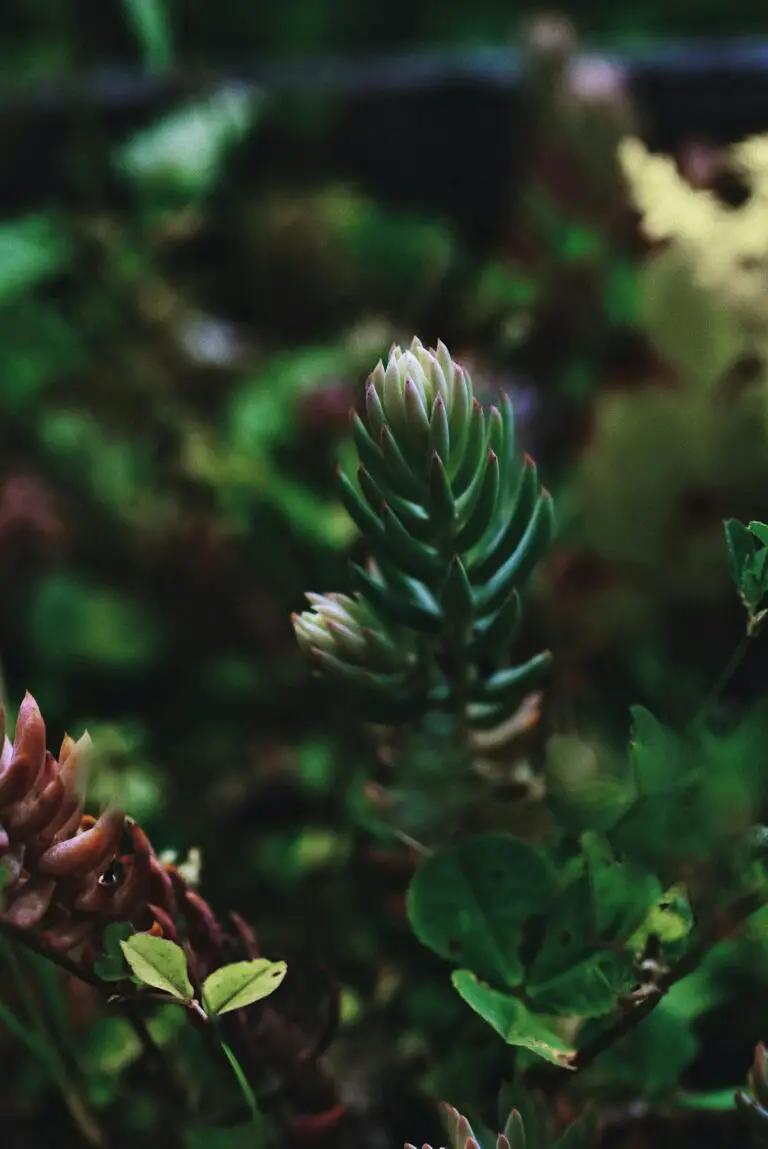Discovering Sedum: An Introduction to Hardy Succulents
Welcome to the diverse world of Sedum, a genus that champions resilience, adaptability, and a striking presence in any succulent garden. These hardy succulents, also referred to as stonecrops, have etched a niche in the hearts of gardeners and landscape designers alike, thanks to their versatile nature and low maintenance requirements.
Imagine a plant that thrives where others struggle, a true testament to the phrase ‘survival of the fittest.’ That’s Sedum for you. With over 400 species under its belt, the genus is celebrated for its ability to withstand challenging environments and a charm that elevates rock gardens, green roofs, and container gardens. Here’s a gem on the perfect timing to introduce these robust beauties into your greenspace.
Common features that unite the Sedum species include their succulent leaves, which are equipped to store water, and their star-shaped blossoms that gift us a showy display. Not to mention, many sedums are evergreen, providing year-round interest. Their resilience to drought and poor soil conditions make them an ideal choice for those looking to create an impactful statement in the garden with minimal upkeep.
But don’t let their rugged nature fool you; sedums have a soft side too. Their flowers come in a palette of hues, attracting pollinators and bringing gardens to life. Real-life examples like ‘Autumn Joy’ with its rusty pink blooms or the ‘Blue Spruce’ whose icy blue foliage paints a serene picture, show the artistic tapestry that sedums can create.
For a deeper dive into caring for these staunch succulents, let’s take a look at this video that provides valuable insights into their care:
Sedum plants are not just survivors; they’re thriver. They cast a spell of rugged beauty across landscapes, flaunting their robust nature and vibrant blossoms. The next time you’re pondering over a green addition to your space, consider the steadfast Sedum—nature’s resilient gem in the vast world of succulents. For enthusiasts eager to delve further into these succulent marvels, take a peek at the general care guide for sedum and watch your garden transform with these hardy charms.
Knowing Your Variety: Types of Sedum for Every Garden
Are you ready to take your gardening game up a notch with some succulent magic? There’s a whole world of sedum varieties waiting for you to explore! Let’s dive into the enchanting universe of Sedum spurium, Sedum telephium, and Sedum reflexum. Each of these stonecrop stars has its own set of superpowers that make them perfect companions for green thumbs looking to add that extra pizzazz to their garden.
Take Sedum spurium, for example. It’s a real trooper, spreading a carpet of vibrant colors even in the toughest of soils. Picture it cascading down your rock garden or forming a lively border along your garden path. It’s not just about looks, though; this variety is tough enough to withstand droughts and harsh winters.
Then there’s Sedum telephium, the versatile middle child, which feels right at home in both rustic country gardens and sleek urban spaces. Known for its thick, fleshy leaves and majestic flower heads, it brings a touch of drama wherever it’s planted. Imagine the amber hues of its autumn blooms blending with the golden light of fall — pure poetry!
Not to be outshone, Sedum reflexum, also known as blue spruce sedum, is the cool kid on the block with its needle-like foliage that seems to shimmer with a silvery-blue sheen. It’s the go-to sedum for creating texture in your garden tapestry, and it thrills in sunny spots where other plants might shy away.
Climate Considerations and Garden Styles
Now, when we talk about sedum, versatility is the name of the game. These adaptable plants can thrive across various climates. From the chilly embrace of northern gardens to the sun-kissed regions down south, there’s a sedum for every climate. But it’s not just about survival; it’s about thriving and bringing year-round interest to your garden nook.
Consider your garden style. Whether you lean toward the wild and free aspects of a cottage garden or appreciate the sleek lines of modern garden design, sedums slip in effortlessly. They’re the perfect playmates for other perennials, adding depth and contrast with their succulent leaves and starry flowers. Think of them as the versatile actors of the botanical stage, fitting into any role with ease and grace.
Check out this video to catch a glimpse of the beautiful sedum varieties that you can easily incorporate into your garden:
In the end, it all boils down to this: when sedum grow, they do so with a fierce independence and a kaleidoscope of colors. They’re not just plants; they’re a statement — a bold declaration that beauty can be found in resilience. So go on, give them a try. Your garden will thank you with a symphony of colors and textures that’ll have everyone talking!
Ideal Conditions: Where and When to Plant Sedum
Imagine a throng of butterflies fluttering around your garden, drawn to the robust blooms of your vibrant sedum plants. This isn’t just wishful thinking—it’s a reality that can be yours with the proper knowledge on when sedum grow and the conditions they love. So, let’s delve into the secrets of creating a thriving haven for stonecrop varieties!
First off, timing is crucial. Planting sedum at the right time ensures that these hardy succulents get a strong start. Spring offers a period of natural growth, but did you know that early fall planting can also yield great results? The mild temperatures allow the roots to establish themselves without the stress of sweltering summer heat or the chill of winter frosts.
Location-wise, these versatile plants aren’t picky, but they do have preferences. Sedum prospers in an environment that mirrors their natural rocky habitats—think well-draining soil with plenty of sunlight. Although they’re tough cookies, waterlogged soil can be their kryptonite, leading to root rot. If your garden’s soil is more clay than sand, consider a raised bed or rock garden to provide that essential drainage.

But wait, there’s more to it than just earth and sun. Local climate and weather patterns play a significant role in sedum success. If you reside in a region with hot, dry summers, your sedum will likely flourish with little effort on your part. On the flip side, gardeners in cooler, wetter climates might opt for varieties like Sedum spectabile or Sedum cauticola, which tolerate moister conditions better.
Let’s not forget the settings! These resilient beauties aren’t just reserved for outdoor spaces. They adapt well to container life, making them perfect for balcony gardens or indoor arrangements. Just ensure they have that essential sunlight—sedum’s zeal for life literally shines when basked in a full day of rays.
Don’t just take our word for it; see for yourself the difference the right conditions make. Incorporate these tips into your planting practice and marvel at the transformation in your garden. And if you’re hungry for more, dive into “Sedum Planting Success: Tips for Vibrant Garden Accents” for a cornucopia of cultivating wisdom.
Soil and Sunlight: Creating the Perfect Environment for Sedum
Laying the foundation for flourishing sedum starts beneath the surface—yes, we’re talking about the dirt under your fingernails! Soil is more than just dirt; it’s a buffet of nutrients, water, air, and life that your sedum need to thrive. Don’t worry; you don’t need a PhD in Soil Sciences to get it right—for sedum, think ‘well-drained’. You want a mix that’s like a well-aged cheese, full of little holes, allowing excess water to escape faster than Houdini!
The Ideal Soil Type for Sedum Success
Imagine soil as the sedum’s bed: it should be comfy but not too soft, supportive but not hard as a rock. Opt for a sandy, gritty mix or a specialized succulent and cacti blend to hit that sweet spot of drainage nirvana. If your local dirt resembles wet pottery clay more than a day at the beach, it’s amendment time! Mix in some sand or perlite to get the texture just right. Not too hungry for nutrients, sedum plants are like the frugal gourmets of the plant world—they thrive in reduced fertility, which makes overfeeding as unnecessary as socks with sandals.
pH Level and Nutrient Talk
When it comes to pH, sedum are the laid-back friends in your garden party. They aren’t fussy and can generally handle a range from slightly acidic to slightly alkaline. Still, aim for a soil pH between 6.0 and 7.5 to stay in the sweetest of spots. If you’re curious about your garden’s pH level, a simple test from your local nursery can help you slip into the detective role and suss it out.
For nutrients, sedum are akin to the minimalist lifestyle—less is more. They fare better with a “just enough” approach. A sprinkle of balanced, slow-release fertilizer in the spring could be all the party favors they need for the year. Remember, too much feasting on nutrients can lead your sedum to an unfortunate life of soft, leggy growth, making them the awkward teenagers of the plant world.
Sunlight: The Sedum Spotlight
On to solar needs—sedum love the limelight, er, sunlight. Most varieties are like those sun-worshipping tourists, craving a minimum of six hours of sunshine a day. However, just like humans, too much of a good thing can lead to a sunburn. In intensely hot climates, a little afternoon shade will prevent them from wilting like a forgotten salad. But if you’re in a milder zone or your summers are as tepid as British tea, full sun is the ticket to get those sedum glowing and growing.
And please, don’t let your sedum tan lines fade during the winter! Evergreen varieties still need their sun-kissed spot to continue rockin’ through the cold months. If your landscape is more shade than sun, worry not—there are sedum varieties known to tolerate lower light conditions. It’s like finding the right pair of shades; a bit of trial and error until you find the perfect match for your garden’s vibe.
Intrigued about knowing more on how to care for sedum plants? I’ve got you covered with this insightful video that will show you the ropes:
Whether you’re a green thumb in training or a seasoned soil sifter, understanding the recipe for the perfect soil and sunlight environment is key. Sedum aren’t asking for much—a comfy soil bed and a sunny spot to lounge. Provide these, and you’ll have stonecrops standing tall, showing off their vibrant colors and intricate textures, and you’ll be the envy of fellow plant lovers. So, get out there, get planting, and watch your sedum grow!
Watering Wisdom: Hydration Needs for Optimal Sedum Growth
Unlock the secret to a flourishing Sedum garden: mastering the art of watering. These resilient troops, known as stonecrops, triumph over droughts with remarkable ease. But don’t be fooled; even the sturdiest warriors need their armor. Discover how to hydrate your Sedum for peak vitality.

Imagine this: the sun scorches the earth, yet amidst the arid landscape, your Sedum stands undeterred. Its secret weapon? A savvy watering strategy. Sedum prefers infrequent yet thorough watering. Overzealous hydration is more foe than friend, leading to waterlogged woes. A general rule of thumb is to water only when the top soil layer has bid farewell to moisture.
Incorporate a tailored guide for your Sedum species and witness a transformation. Each variety, with its own unique charm, quenches its thirst differently. Sedum ‘Autumn Joy’ may raise its glass less frequently compared to its cousin, Sedum ‘Cape Blanco’. The amount matters too; envision a gentle rainfall rather than a monsoon when you water.
Need more insights on nurturing your green companions? Our comprehensive succulent care guide unveils top tips for thriving plant life. Explore watering wisdom, light preferences, and more to elevate your gardening game to new heights. It’s time to cultivate, captivate, and celebrate the joys of Sedum gardening.
Remember, the goal is to mimic natural conditions. Most Sedum species hail from dry, rocky crags and thrive under the kiss of intermittent rains. By emulating these patterns, your Sedum won’t just grow; it will prosper with pleasure. So grab your watering can, channel your inner green god or goddess, and let your Sedum drink to their heart’s content—just not too often.
Propagating Perfection: Sedum Propagation Techniques
Unlock the potential of your garden with the art of sedum propagation, a fulfilling venture that garners flourishing stonecrop beauties. Embrace the simplicity and efficacy of nature’s own way to expand your sedum collection. Let’s delve into the world of propagation and transform your gardening practice!
Leaf Cuttings: Nature’s Simplicity at Its Best
Starting with leaf cuttings is akin to capturing the essence of creation with just a single piece of the plant. Imagine plucking a healthy leaf from your robust sedum and laying it upon moist soil. With patience and gentle care, roots begin to emerge—miraculously—a new plant forms. It’s a gentle reminder that from small beginnings come great things.
Stem Cuttings: The Quick Path to Growth
Stem cuttings offer a faster track to proliferation. A snip here, a plant there, and voila! You have new sedum plants taking root. This method is as straightforward as it sounds: cut a stem, let it callous, and plant it in well-draining soil. Within weeks, signs of new life appear, promising an expanded sedum sanctuary.
Division: Multiplying Garden Treasures
The process of division feels almost like uncovering hidden treasure as you gently separate the crowns of an established sedum. Each segment, with roots intact, becomes a new plant ready to thrive. This method not only multiplies your sedum but also invigorates older plants, ensuring vitality and growth across generations.
Whether you choose leaf cuttings, stem cuttings, or division, each technique opens a new chapter in your horticultural journey. By following step-by-step instructions and providing the tender care these succulents need, you will undoubtedly encourage successful growth and expansion. Let propagate the wonders of sedum become part of your garden’s rhythm!

Pest Prevention and Control: Protecting Your Sedum
Let’s face it, gardening is not just a serene stroll through a sea of green; it’s a battlefield where your precious sedum can fall victim to an assortment of crafty critters and cryptic diseases. But don’t raise the white flag just yet! With the right information, you can reinforce your sedum’s defenses and keep them thriving.
Imagine you’ve planted a striking collection of ‘Autumn Joy’ sedum, only to find its fleshy leaves being pockmarked by pests. That’s right, aphids just adore these succulent snacks. These sap-sucking insects can cause deformed leaves and diminished health in your stonecrop varieties.
But, fear not! A strong stream of water can dislodge these tiny terrors, and introducing beneficial insects like ladybugs into your garden can turn the tide in your favor. Ladybugs feast on aphids faster than you can say ‘pest control’! For those stubborn invasions, organic insecticidal soap can be the gentle yet firm barrier your plants need.
Now, let’s talk about the ominous fungus gnats, scurrying about your sedum like shadowy specters. Overwatering creates the perfect damp lair for these pests. The fix? Water your sedums wisely, allowing the soil to dry between waterings. In the event of a gnat gala, a sprinkle of diatomaceous earth over the soil surface acts as an unwelcome mat for these unwanted guests.
Oh, but the plot thickens, your sedums are not just battling insects, but diseases like powdery mildew as well, leaving a white, powdery film on the leaves like a poorly done stage makeup. To dodge this dastardly disease, ensure good air circulation by spacing your plants properly and pruning them judiciously.
Real-Life Examples: The Proof Is in the Planting
Consider Jane, a dedicated gardener who noticed her sedum’s leaves were losing their luster, turning yellow and wilting. She spotted the culprit – a mealybug infestation! Jane acted swiftly, dabbing them away with an alcohol-soaked cotton swab and showering her plants with neem oil, a natural insecticide that sent the mealybugs packing.
Then there’s the tale of Tom, whose sedum collection faced a snail siege every dawn. By setting up copper barriers, a metal these mollusks can’t tolerate, he effectively turned his garden into a snail-free fortress.
For both Jane and Tom, proactive measures kept their sedums safe and sound, demonstrating that a bit of insight and action goes a long way in the realm of pest prevention.
Let the real-life successes of sedum savants inspire your gardening journey. Take a look at this informative video highlighting common succulent pests and the simplicity of treating them, so you too can relish in robust, resplendent sedums.
Stay vigilant, fellow green thumbs, and remember, the secrets to verdant victory lie in understanding and outmaneuvering the foes of your flourishing foliage. We’ve armed you with the knowledge, now march forth and protect your sedum!
Landscape Design with Sedum: Aesthetics and Functionality
Envision a garden where foliage and flowers blend in a tapestry of color and texture. Sedum, or stonecrop, is the artist behind this natural masterpiece. From the rugged beauty of a rock garden to the innovative sustainability of green roofs, sedum plays a myriad role in garden designs. Let’s delve into the vibrant world of sedums and how their flexibility can transform your garden into a functional, yet visually stunning sanctuary.
Imagine the allure of a rock garden, a tableau etched with the hardy elegance of sedum. Their succulent leaves, whether jade-green or ruby-red, spill between stones, softening the hardscape and inviting a closer look. Sedum varieties, like ‘Dragon’s Blood’ with its fiery foliage, bring life to these spaces, proving that resilience and beauty are not mutually exclusive.
Rooftop Rhapsody with Succulents
Not just confined to terra firma, sedum soars to new heights on green roofs. These living roofs are not only a statement of eco-consciousness but a canvas for creativity. Picture the ‘Sedum Roof’, a low-maintenance quilt of drought-resistant plants that provide year-round interest. By absorbing rainfall and providing insulation, these rooftop gardens are as practical as they are picturesque.
Let’s not overlook the functional grace of sedum in the urban landscape. Their knack for thriving in challenging conditions makes them exemplary candidates for urban gardens, where space is sparse, and the environment is harsh. The Sedum sarmentosum, for instance, can flourish in thin layers of soil, softening the cityscape with its verdant sprawl.
For those who fancy a more pastoral aesthetic, consider the meadow garden, where grasses sway beside a mélange of perennials, with sedum punctuating the green expanse. In such designs, sedum serves as the dependable protagonist, greeting each season’s ebb and flow with unwavering charm.

Incorporating sedum into your garden design is not just about aesthetics; it’s about formulating a space that resonates with life, one that adheres to the rhythms of the natural world. Whether you’re looking to craft a serene retreat or a vibrant tapestry of blooms, sedum offers a palette of possibilities. They remind us that in the realm of design, function and beauty are inextricably linked, each element nurturing the other.
Sedum Through the Seasons: Year-Round Plant Care
Welcome to the enchanted world of sedum! Like a cast of characters each with their unique charm, these stonecrop varieties dance through the seasons, offering a year-round spectacle of beauty and resilience. Let’s journey through the calendar and unveil the secrets to keeping your sedum thriving, no matter the weather!
Winter’s Slumber: Tucking Your Sedum in for the Cold
Imagine a quaint cottage under a blanket of snow, smoke wisping from the chimney. That’s your sedum in winter – dormant but cozy. As a succulent, sedum has mastered the art of staying plump and protected even as Jack Frost nips at its heels. Before the first frost hits, limit watering to help your sedum harden off and prepare for its winter nap. A light layer of mulch can add extra insulation, but beware of overdoing it—these hardy plants need to breathe, even in their slumber.
Breath of Fresh Air: Springtime and Rejuvenation
With the spring thaw, life whispers back into the garden, and your sedum stretches out after its long rest. This is the time for refreshing the soul—and the soil! Clear away old, dead foliage to make room for new growth. Early spring showers quench the sedum’s thirst, but be mindful of drainage, as these drought-tolerant plants detest soggy feet. A sprinkling of balanced fertilizer can kickstart their growth spurt, ushering in a vibrant season of renewal.
Summer’s Blaze: Managing Growth and Bloom
Under the blazing summer sun, sedum is in its element, soaking up the rays with joyous abandon. This is their moment, and man, do they shine! Your garden becomes a living canvas painted with their lush foliage and starburst flowers. But be watchful – summer can also bring zealous growth. Keep your sedum in check with strategic pruning, allowing each plant enough room to flaunt its stuff without overshadowing its neighbors.

Transition Time: Autumn’s Gentle Shift
As the days shorten and the air cools, your sedum takes cue from the fading light. Autumn’s gentle shift brings about a slower pace in the garden. This is the time to enjoy the tapestry of rich hues as some sedum varieties turn shades of copper and scarlet. Gradually reduce watering to help plants harden off once more before winter—think of it as easing them into a restful meditative state. And don’t be too quick to deadhead those spent blooms; they provide delightful texture and interest, even as the garden winds down.
Throughout each season, remember that sedum’s needs are simple: sunlight, a little water, and room to grow. With these seasonal tips, you’ll ensure your sedum not only survives but thrives, providing a year-round display of tenacious spirit and captivating beauty. Let each season bring its own sedum magic to your garden!
Frequently Asked Questions
Are you a sedum enthusiast? Curious about how to get the most out of your stonecrop varieties? You’re in luck because we’re tackling the top questions that plant aficionados, like you, are asking. Let’s dive in and make your sedum the talk of the town!
When is the Best Time to Plant Sedum?
Planting sedum is like timing the perfect cup of tea – not too hot, not too cold. Spring provides that gentle warmth sedums crave for their root establishment. But hey, if you missed the spring bus, early fall can also come to your rescue before the frost starts playing tag.
Weathering the Storm: Caring for Sedum
Sedums are the MacGyver of plants – resourceful and hardy. When the heavens open up or the sun cranks up the heat, sedum hunkers down with its succulent leaves. Yet, a little extra TLC goes a long way. In a deluge, ensure good drainage to prevent root rot. During a scorching summer, a light mulch can offer a cool bed for those roots.
It’s Showtime: When Do Sedums Bloom?
Blooms ahoy! Sedums roll out their floral carpet from late summer into fall, like a Broadway show that starts after the sun takes a bow. Get ready for starburst-sized flowers making a spectacle in your garden. And the best part? They stick around for a lengthy curtain call well into autumn’s crisp evenings.
Managing the Overeager Grower
When your sedum starts believing it’s a jungle conqueror, reigning in the overgrowth is key. Prune in early summer to encourage a bushier, more compact shape. If sedum spreads where it shouldn’t, a polite but firm relocation with a spade can redirect its pioneering spirit.

Remember, the secret to a thriving sedum garden is understanding its rhythm and dance steps. With these insights, you’re well on your way to a standing ovation from every butterfly and bee in the neighborhood!


